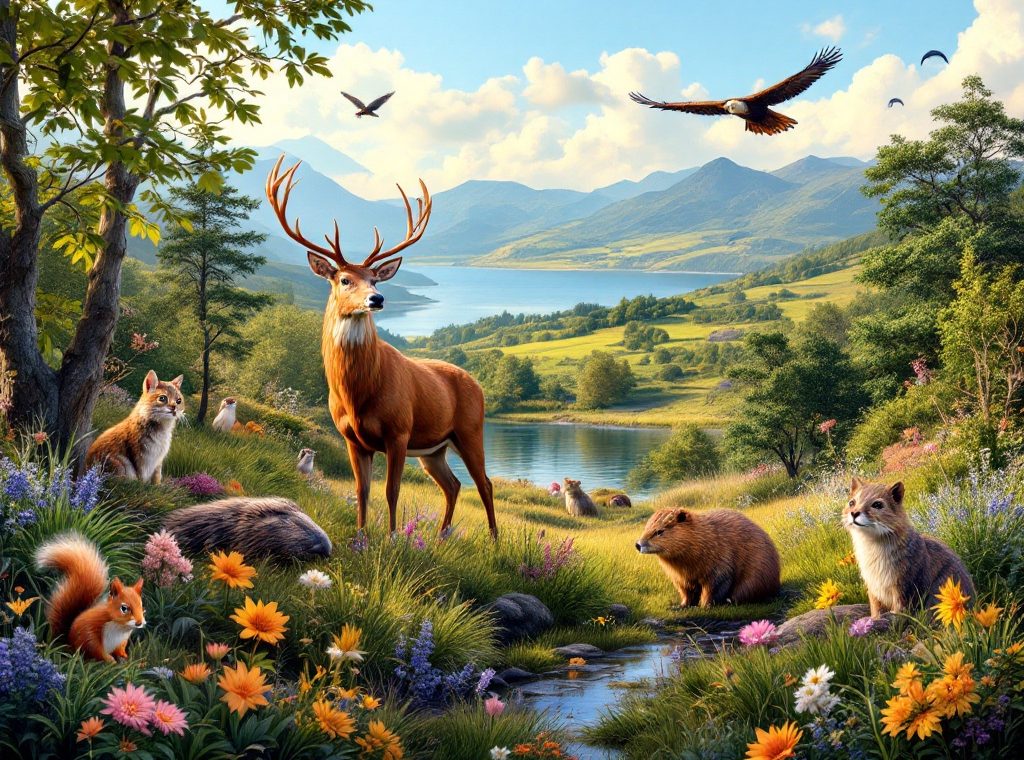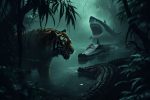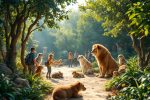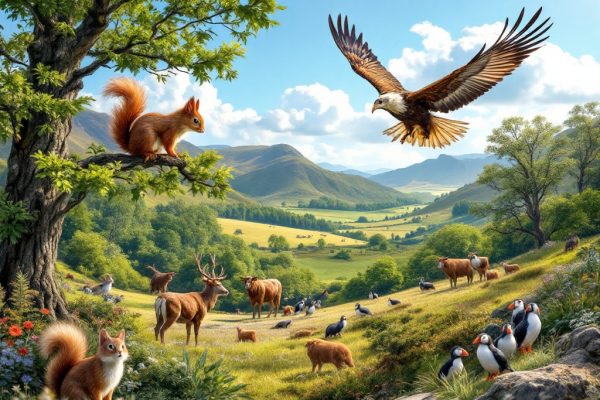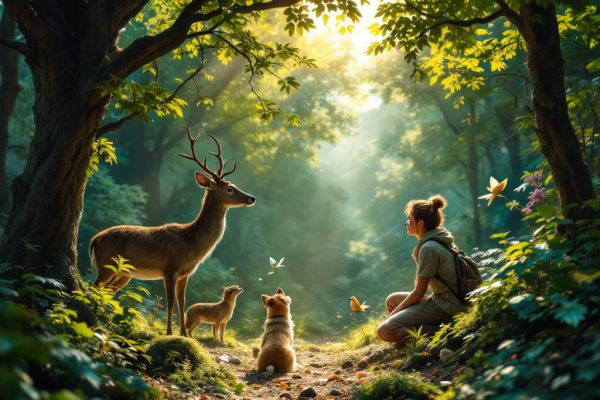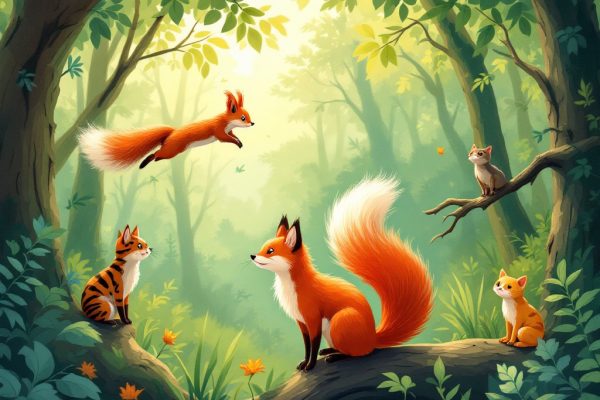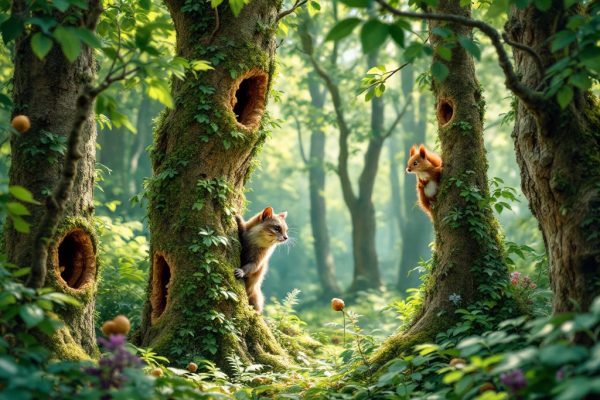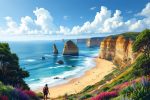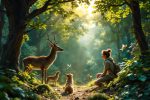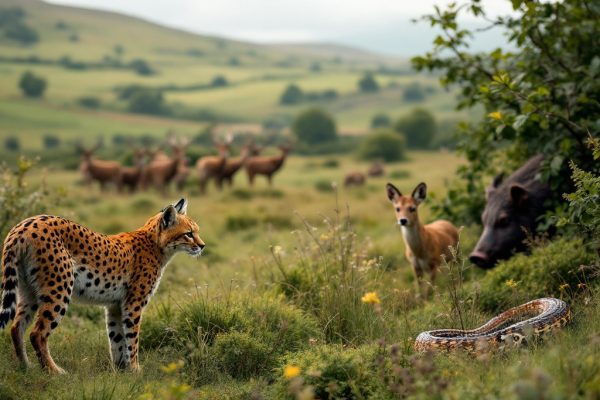Most Popular Wild Animals in Lothian
Discover Lothian’s amazing wildlife! From the majestic red deer, Britain’s largest land mammal, to the elusive pine marten, Lothian’s diverse habitats teem with fascinating creatures. Witness the resurgence of the Eurasian beaver and the soaring golden eagle. Learn about conservation efforts for the endangered Scottish wildcat and the iconic red squirrel. Explore the Highlands to find ptarmigan and mountain hares. Even bottlenose dolphins grace the coast. Explore Lothian’s wild side – an unforgettable adventure awaits!
Important information
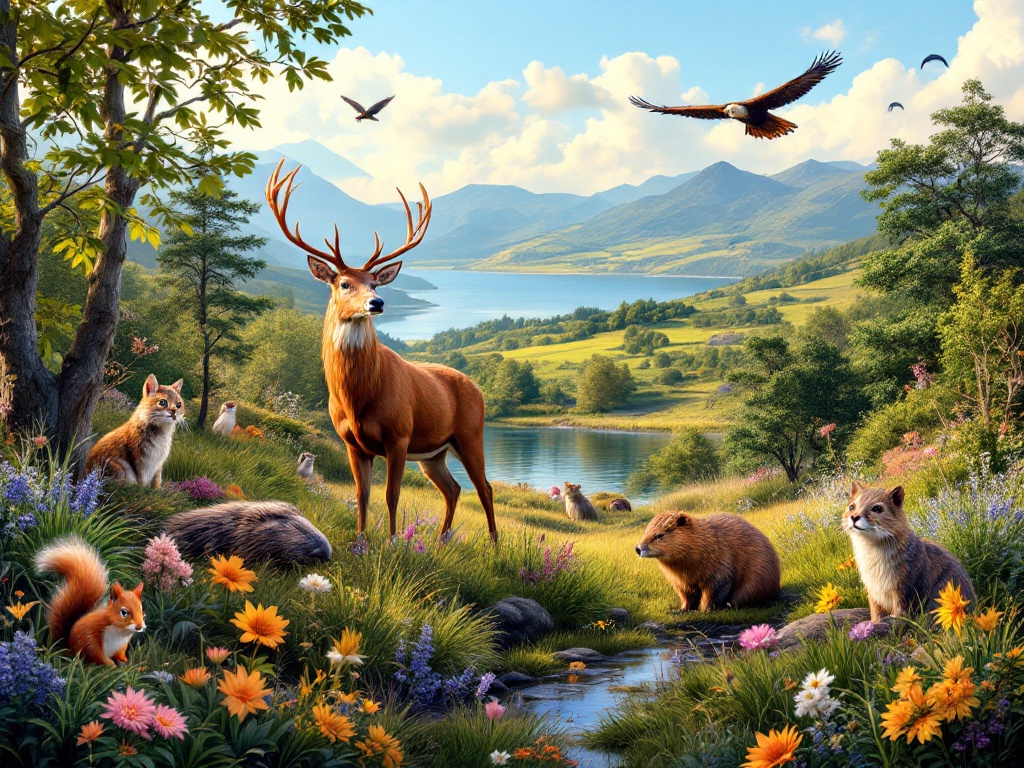
- Red deer are the largest land mammals in Britain and a key part of Lothian’s diverse wildlife.
- The Scottish wildcat is critically endangered, highlighting the importance of conservation efforts.
- Red squirrels are native to the area and contribute to forest regeneration, but face threats from habitat loss and competition.
- Eurasian beavers, successfully reintroduced in 2009, play a vital role in the local ecosystem.
- Golden eagles, a majestic bird of prey, can be spotted soaring over the Lothian Highlands.
Most Popular Wild Animals in Lothian
Lothian offers a remarkable wildlife experience. Observe red deer, Lothian’s largest land mammal. Spot the elusive pine marten in the woodlands. While the Scottish wildcat is endangered, the red squirrel thrives. A conservation success story is the reintroduced Eurasian beaver, now vital to the ecosystem. See golden eagles soar overhead. The forests shelter the rare capercaillie. Ptarmigan and mountain hares reside in the highlands. Bottlenose dolphins entertain along the coast.
Red Deer: Largest Terrestrial Mammal
Red deer, Britain’s largest land mammals, are an iconic symbol of the Scottish Highlands and enrich Lothian’s biodiversity. These majestic creatures thrive in Lothian’s forests and open moorlands, wherever food and shelter are abundant. From mid-September to late October, the rutting season commences. This is a dramatic spectacle where males compete fiercely, roaring and fighting to attract females. Their grazing significantly shapes the vegetation, promoting plant diversity. However, large herds, particularly during winter, can sometimes overgraze, demonstrating that their impact isn’t always beneficial.
Scottish Wildcat: Critically Endangered Predator
The critically endangered Scottish Wildcat is a rare sight, inhabiting the remote woodlands of the Scottish Highlands. Often confused with house cats, these elusive felines possess distinguishing features like larger skulls and bushier tails. While glimpses are sometimes possible in conservation-focused wildlife parks, these parks play a vital role in protecting Britain’s last native cat species. Wildcats face serious threats, including habitat loss, hunting, and interbreeding with feral domestic cats. However, ongoing conservation projects, such as Saving Wildcats, offer a beacon of hope. Their crucial work focuses on reintroducing purebred Wildcats into their natural habitat, promising a brighter future for these magnificent creatures.
Red Squirrel: Iconic Native Species
Native to Lothian, Scotland, red squirrels play a vital role in forest ecosystems by dispersing seeds, especially from conifers. This is crucial for forest regeneration. However, these iconic creatures face threats, including habitat loss and competition from grey squirrels. Ongoing conservation efforts focus on protecting red squirrel habitats and managing grey squirrel populations to ensure their survival.
Pine Marten: Elusive Woodland Resident
Pine martens play a crucial role in Lothian’s ecosystem. Sadly, habitat loss and hunting almost wiped them out by the late 19th century. Fortunately, conservation efforts have increased their population in Scotland, including Lothian. These nocturnal animals live in woodlands and mainly eat small mammals, along with birds and fruit. Their brown fur and yellow bib make them easy to spot.
Eurasian Beaver: Reintroduction Success
Eurasian beavers, absent for centuries, made a triumphant return to Scotland in 2009, marking a significant conservation achievement. The project’s success has been remarkable.
Golden Eagle: Majestic Bird of Prey
Golden eagles are among the UK’s largest birds of prey. Their impressive wingspan and powerful hunting skills make them a magnificent sight. These eagles inhabit mountainous areas and moorlands, primarily hunting medium-sized mammals and birds. While you might glimpse one gliding, they are sometimes confused with buzzards. Their soaring flight allows them to spot prey from a considerable distance. Scotland’s growing golden eagle population demonstrates successful conservation efforts. To see these majestic birds in Lothian, venture to the Highlands and search for a large, gliding bird with distinctive “fingers” at its wingtips. Early morning and late afternoon offer the best viewing opportunities. Binoculars and a guidebook will enhance your eagle-watching experience.
Capercaillie: Rare Forest Bird
The capercaillie, the largest of all grouse, flourishes in Scotland’s ancient Caledonian pine forests. Their diet consists mainly of pine needles, berries, and buds. These impressive birds require expansive territories with mature trees for cover and open areas for courtship rituals. Because they are so rare, conservation efforts are critical. These efforts focus on habitat restoration and protection to ensure their survival. Preserving old-growth forests is essential, as is managing human activity within their habitat.
Ptarmigan: Highland Specialist
Ptarmigans thrive in the challenging highland environment, exhibiting remarkable adaptations. These birds play a crucial role in the highland ecosystem.
Mountain Hare: Upland Inhabitant
The mountain hare, a remarkably adaptable creature, thrives in Lothian’s upland heather moorlands. Its fur cleverly changes color with the seasons, providing excellent camouflage. In winter, its coat turns a snowy white, concealing it from predators against the wintry landscape. Come summer, the fur transforms to a brown hue, blending seamlessly with the surrounding vegetation. These resilient animals primarily feed on heather, sedges, and grasses. They also create shallow forms for resting and play a vital role in the region’s diverse wildlife.
Bottlenose Dolphin: Coastal Spectacle
Bottlenose dolphins are frequent visitors to the East Lothian coast, offering thrilling wildlife encounters for anyone lucky enough to spot these magnificent creatures.

